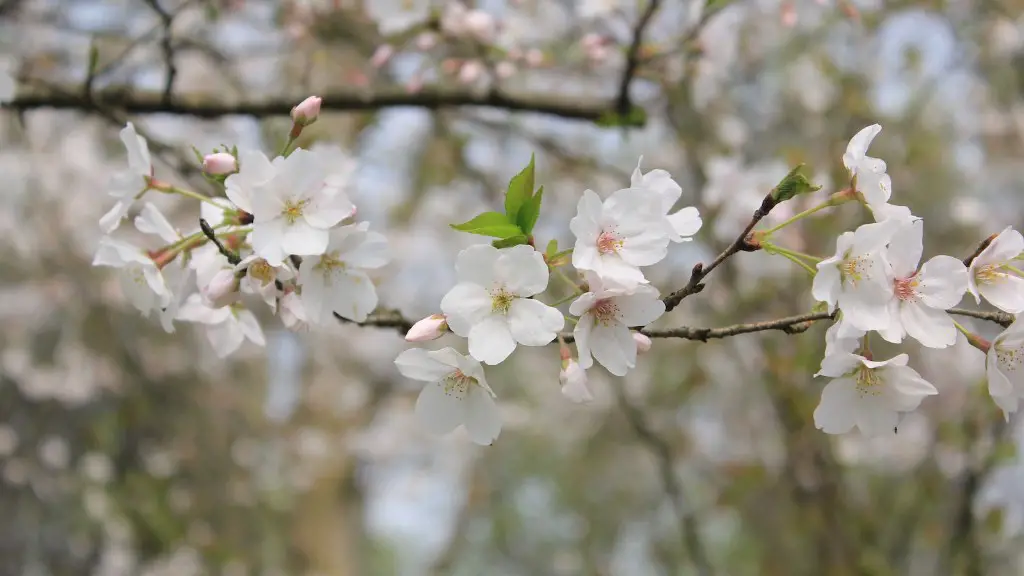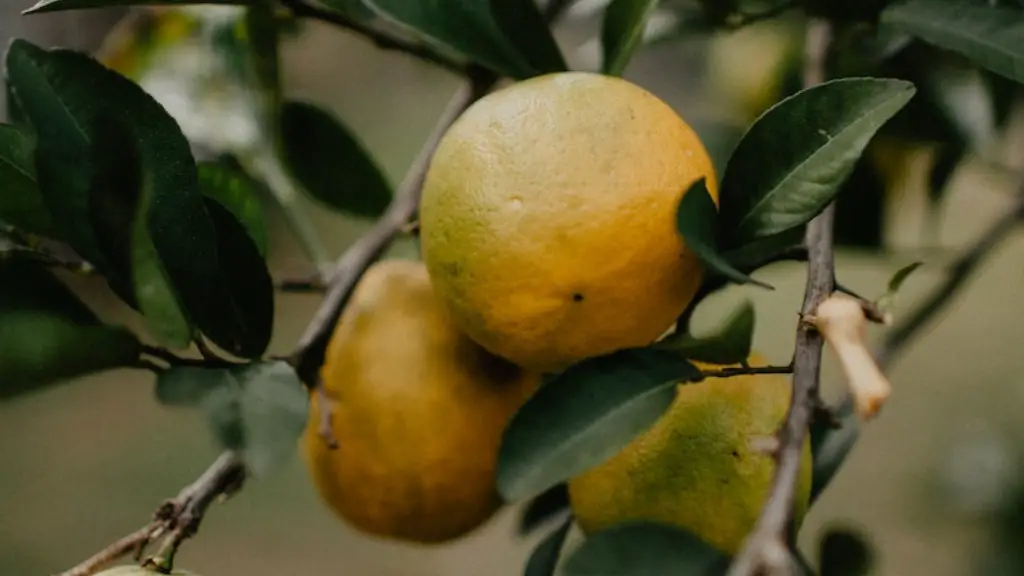Identify When to Prune Your Cherry Tree
The best time to prune a cherry tree is during the dormant season, between late autumn to late winter. Pruning a cherry tree during this period reduces the tree’s vigor and encourages it to go into dormancy during the cold winter months. It also increases the chances of stimulating new growth in the late spring and early summer.
Safety
Whenever carrying out any pruning activities, safety should be taken seriously. Make sure to wear protective eye gear, gloves and a face covering when trimming or cutting back a cherry tree. You should also adhere to any local regulations and guidelines when it comes to pruning or trimming trees.
Removing Dead or Broken Branches
The first step in trimming a cherry tree is to remove any dead, broken or diseased branches. This should be done to reduce the risk of disease spread and to also prevent further damage to the tree. To begin, locate any dead or broken branches and use sharp pruning shears to make a clean cut just above where they meet the trunk. If the branch is too thick to cut with pruning shears, use a saw to remove it.
Crown and Fruiting Wood Pruning
The next step is to prune the crown of the cherry tree. This involves removing any branches that are growing too closely together and any that are rubbing against each other. Pruning the crown will help to improve air circulation, allowing the tree to better withstand disease and pest infestations. Additionally, you should also prune any fruiting wood, which is any branches that are starting to produce fruit. This is done to remove any weak branches, resulting in better quality fruit from the remaining branches.
Maintaining the Shape of the Tree
When trimming a cherry tree, it is also important to maintain the overall shape of the tree. This can be done by carefully pruning any branches that are extending out of the tree’s natural form or that are growing too close to the trunk. This will help to keep the tree looking neat and in a symmetrical shape.
Reducing the Overall Size of the Tree
Trimming a cherry tree can also be done to reduce its overall size. This should only be done if the tree is growing out of bounds and threatens to damage nearby structures such as an eaves, power lines or neighbouring property. When pruning for size, only remove branches that are extending out of the tree’s natural shape and limit your pruning to around 20% of the tree’s total canopy.
Watching Trimming Videos
Using videos as guides while trimming a cherry tree is a great way to ensure that you are doing the job correctly. Videos can help to give you a better understanding of the steps involved in pruning and will provide useful tips and techniques that you can use. There are plenty of informative videos available online that provide detailed instructions on how to trim a cherry tree.
Preparing Your Equipment
Prior to beginning any trimming activities, make sure that your equipment is prepared and ready to use. You will need a ladder, sharp pruning shears, saw, gloves and safety goggles. Make sure that all of these items are in good condition, as safety hazards can occur if the wrong equipment is used. Additionally, be sure to sterilize your pruning shears with a bleach solution before and after pruning to help prevent the spread of disease.
Staking When Necessary
If your cherry tree needs to be staked, it is important to do this before beginning any pruning activities. Staking will provide support and protection for the tree and can help keep it upright in strong winds or harsh weather. It is important to use strong, durable stakes that are secured firmly into the ground and never tie the tree directly to the stakes, as this may cause serious damage.
Useful Video Tutorials
Finding an experienced cherry tree pruner in your area can be difficult, but using video tutorials is a great way to learn the steps of pruning and picking up tips on how to is done correctly. Online videos can provide an easy-to-follow visual step-by-step guide that can walk the viewer through the entire process, making it easier to understand.
Caring for Your Pruned Tree
After trimming, it is important to provide the cherry tree with the proper care it needs. This includes proper fertilization, mulching, pest and disease control and adequate water. Caring for your tree in this way can help promote new growth and healthy foliage.
Cherry Tree Diseases
Cherry trees can be prone to a variety of diseases. Common diseases include black knot, shot hole and bacterial canker. These diseases can cause significant damage to the tree and spread quickly if not treated. If you notice any of these signs, contact a local arborist for help in determining the best approach for treating the issue.
Preventative Practices
One of the best things you can do to keep your cherry tree healthy is to practice preventative care. This includes regularly inspecting your tree for signs of pests or disease, and removing any dead or broken branches. Additionally, mulch around the base of the tree to help insulate the roots from extreme temperatures.
Fully Understanding Your Cherry Tree
It is important to understand the specific needs of your cherry tree in order to ensure it is growing in a healthy environment. Knowing when to fertilize and water the tree, as well as identifying any nutrient deficiencies, can make a big difference in its overall health. Regularly consulting with a local arborist on pruning and general care can also help in the upkeep of your cherry tree.
Limiting Pruning
When it comes to pruning a cherry tree, it is important to limit the amount of pruning done. Too much pruning can disrupt the entire structure of the tree and lead to issues such as disease or pest infestations. When pruning, only remove what needs to be removed and never take too much off.
Organic Compost
To help promote growth and improve the health of your cherry tree, use organic compost to top-dress the soil around the tree. Compost will add nutrients to the soil, encourage the growth of beneficial microbes and help retain moisture. Make sure to top-dress the soil when the tree is dormant, which is usually between late autumn to late winter.
Avoid Over-Watering
One of the most important, yet overlooked, aspects of cherry tree care is water. It is essential to water the tree when needed, but it is equally important to not over-water it. Too much water can drown the tree’s roots and lead to disease, discoloration and death. To avoid over-watering, check the soil moisture before watering and never allow it to become overly saturated.




